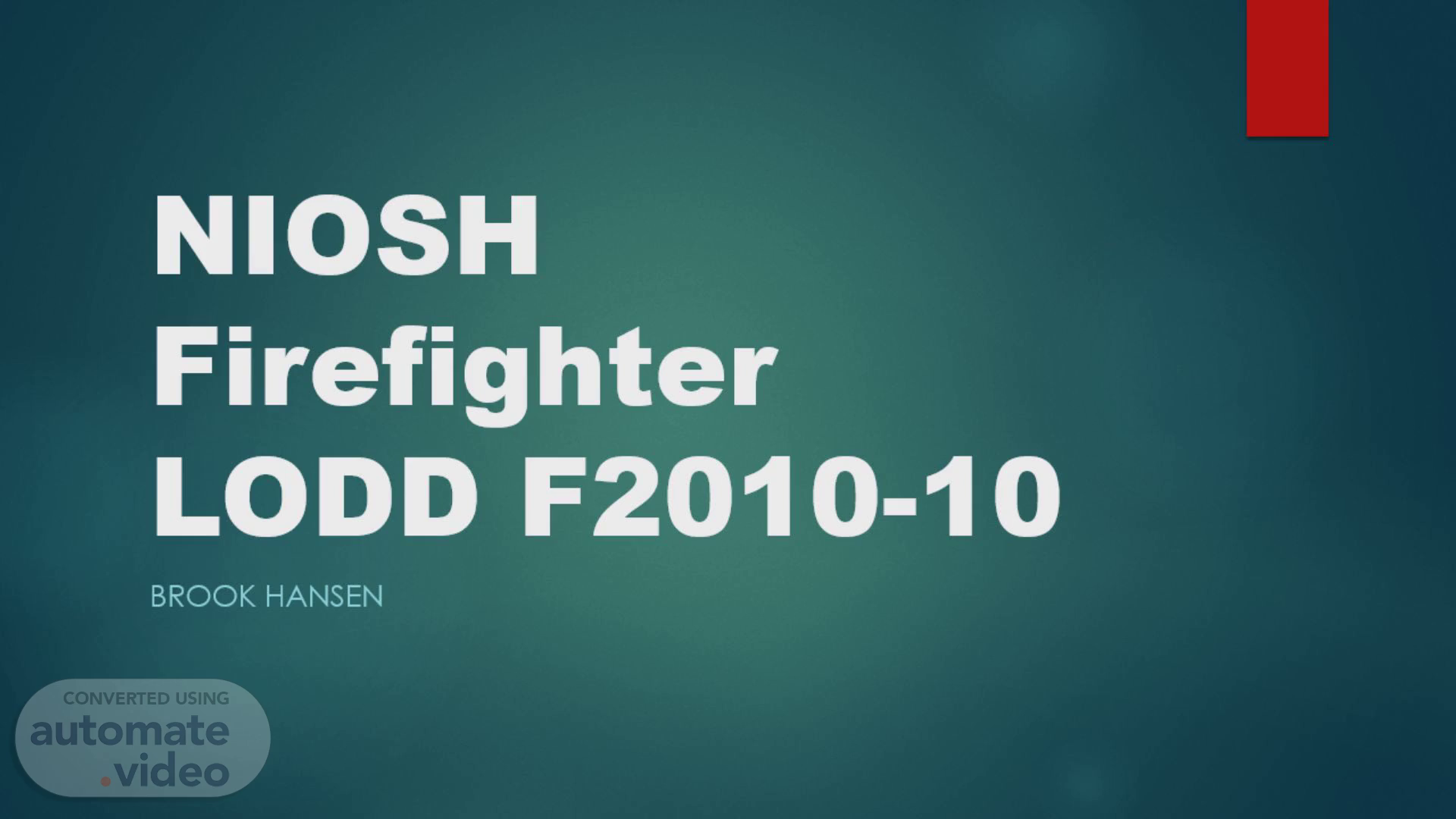
Page 1 (0s)
[Audio] NIOSH firefighter line of duty death F2020-10.
Page 2 (6s)
[Audio] On March 30 2010 a 28-year-old male career fire fighter/paramedic (victim) died and a 21-year-old female part-time fire fighter/paramedic was injured when caught in an apparent flashover while operating a hoseline within a residence. Units arrived on scene to find heavy fire conditions at the rear of a house and moderate smoke conditions within the uninvolved areas of the house..
Page 3 (35s)
[Audio] A search and rescue crew had made entry into the house to search for a civilian who was entrapped at the rear of the house. The victim the injured fire fighter/paramedic and a third fire fighter made entry into the home with a charged 2 ½ inch hoseline. Thick black rolling smoke banked down to knee level after the hoseline was advanced 12 feet into the kitchen area. While ventilation activities were occurring the search and rescue crew observed fire rolling across the ceiling within the smoke.
Page 4 (1m 6s)
[Audio] They immediately yelled to the hoseline crew to "get out." The search and rescue crew were able to exit the structure safely then returned to rescue the injured fire fighter/paramedic first and then the victim. The victim was found wrapped in the 2 ½ inch hoseline that had ruptured and without his facepiece on. He was quickly brought out of the structure received medical care on scene and was transported to a local hospital where he was pronounced dead..
Page 5 (1m 33s)
Brian Colin “Boo” Carey, Firefighter Age 28, Career • Homewood Fire Department, Illinois.
Page 6 (1m 53s)
[Audio] Contributing Factors. Well involved fire with entrapped civilian upon arrival Incomplete 360 degree size-up Inadequate risk-versus-gain analysis Ineffective fire control tactics Failure to recognize understand and react to deteriorating conditions Uncoordinated ventilation and its effect on fire behavior Removal of self-contained breathing apparatus (S-C-B-A-) facepiece Inadequate command control and accountability Insufficient staffing..
Page 7 (2m 28s)
View after flashover. Collapsed ceiling. collapsed ceiling.
Page 8 (2m 44s)
[Audio] NIOSH Recommendations. Recommendation #1: Fire departments should ensure that a complete 360 degree situational size-up is conducted on dwelling fires and others where it is physically possible and ensure that a risk-versus-gain analysis and a survivability profile for trapped occupants is conducted prior to committing to interior fire fighting operations..
Page 9 (3m 10s)
[Audio] Recommendation #2: Fire departments should ensure that interior fire suppression crews attack the fire effectively to include appropriate fire flow for the given fire load and structure use of fire streams appropriate hose and nozzle selection and adequate personnel to operate the hoseline. Recommendation #2: Fire departments should ensure that interior fire suppression crews attack the fire effectively to include appropriate fire flow for the given fire load and structure use of fire streams appropriate hose and nozzle selection and adequate personnel to operate the hoseline. Recommendation #3: Fire departments should ensure that fire fighters maintain crew integrity when operating on the fireground especially when performing interior fire suppression activities..
Page 10 (4m 1s)
[Audio] Recommendation #4: Fire departments should ensure that fire fighters and officers have a sound understanding of fire behavior and the ability to recognize indicators of fire development and the potential for extreme fire behavior. Recommendation #4: Fire departments should ensure that fire fighters and officers have a sound understanding of fire behavior and the ability to recognize indicators of fire development and the potential for extreme fire behavior..
Page 11 (4m 35s)
[Audio] Recommendation #6: Fire departments should ensure that fire fighters use their self-contained breathing apparatus (S-C-B-A-) and are trained in S-C-B-A emergency procedures..
Page 12 (4m 51s)
[Audio] Johnston Grimes Takeaways. 360 Size-ups should be performed to access fire conditions and risks. Risks should be evaluated prior to committing crews to search. Ventilations should be coordinated with interior crews. RIT/RIC teams should be ready when available.